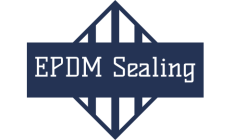seals O-rings

O-rings are one of the most commonly used types of seals in various industries due to their simplicity, versatility, and effectiveness in creating a reliable seal between two mating surfaces. Here’s an overview of O-rings:
Functionality:
- O-rings are circular rings typically made from elastomeric materials such as rubber, silicone, or fluorocarbon.
- They are designed to be compressed between two mating surfaces, creating a seal that prevents the leakage of fluids or gases.
- O-rings work by filling the gap between the mating surfaces, exerting radial pressure to create a tight seal.
Design:
- O-rings have a simple circular cross-section, resembling the letter “O,” hence their name.
- They are available in a wide range of sizes, diameters, and materials to suit different applications and operating conditions.
- O-rings may be solid or hollow depending on the application requirements.
Materials:
- O-rings can be made from various elastomeric materials, including:
- Nitrile rubber (NBR): Offers good resistance to oil, fuel, and hydraulic fluids.
- Fluoroelastomers (e.g., Viton): Known for their excellent resistance to high temperatures, chemicals, and fuels.
- Silicone rubber: Provides flexibility and high-temperature resistance, making it suitable for a wide range of applications.
- The choice of material depends on factors such as the type of fluid or gas being sealed, temperature, pressure, and environmental conditions.
- O-rings can be made from various elastomeric materials, including:
Applications:
- O-rings are used in a wide range of industries and applications, including automotive, aerospace, hydraulic systems, pneumatic systems, plumbing, and manufacturing.
- Common applications include sealing pipe connections, hydraulic and pneumatic cylinders, pumps, valves, fittings, and hydraulic motors.
Installation and Maintenance:
- Proper installation of O-rings is essential for ensuring effective sealing performance and preventing leaks.
- Surfaces should be clean, dry, and free of debris before installing the O-ring.
- O-rings should be properly lubricated with a compatible lubricant to reduce friction and prevent damage during installation.
- Regular inspection and replacement of worn or damaged O-rings are necessary to maintain optimal sealing performance and prevent leaks.
O-rings offer a simple yet effective solution for creating a reliable seal between two mating surfaces in a wide range of applications. Proper selection, installation, and maintenance of O-rings are essential for ensuring reliable and leak-free operation.
